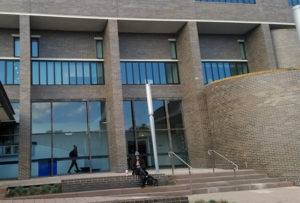Benefits from New York State”™s Excelsior Scholarship ”“ the initiative Gov. Andrew M. Cuomo has touted as a first-in-the-nation free college tuition program ”“ have gone to just 3.2 percent of the state”™s public college students, according to an analysis published Aug. 10.

The analysis ”“ released by the Center for an Urban Future (CUF), a New York City nonpartisan think tank ”“ found that 20,086 students statewide received an award from the Excelsior program last year, out of 633,543 total undergraduates at State University of New York (SUNY) and City University of New York (CUNY) schools. Of the 63,599 applications the state received for the scholarship, a little more than two-thirds were rejected, according to the report.
The program is a “last dollar” program, meaning the Excelsior Scholarship covers the remaining tuition costs after a SUNY or CUNY student receives state and federal student aid dollars and scholarships. Cuomo announced the program as part of his 2017 policy agenda, and it was signed into law through that year”™s budget.
Last year, the program opened to New York families with household incomes up to $100,000. The threshold rose to $110,000 this year and will rise again to reach $125,000 next year.
Related: Colleges weigh uncertain impact of state”™s Excelsior Scholarship debut
The CUF analysis of the state Higher Education Services Corp. data found the most common reason Excelsior applicants were rejected was a lack of credits. The scholarship requires that students take 30 credits a year, a full slate. That provision has been criticized from the program”™s outset as onerous to working students.
The phrase “not sufficient credits” accounted for 36,095 Excelsior Scholarship denials, according to CUF, about 83 percent of all rejected applications.
The scholarship also requires potential students to maintain a passing grade point average and applies only to undergraduate studies. To qualify, students must have lived in New York for more than a year. After graduation, New Yorkers who received Excelsior funding must remain in the state for a time equal to the length of the scholarship. Otherwise, the scholarship converts into a loan.
The analysis concluded that “the requirement that all students earn at least 30 credits in every year of enrollment is screening out the majority of applicants for the Excelsior Scholarship.”
The think tank recommended that Cuomo and state lawmakers “make critical reforms to the Excelsior Scholarship program to ensure that more students who need financial assistance to attend college and earn a credential are able to qualify for this well-intended but flawed program.”
Officials with the Cuomo administration argued with the analysis’ methodology, the Albany Times Union reported, saying the study should not count nonresidents and part-time students who applied for a scholarship despite being ineligible.
State officials also noted that a majority of students already attend public colleges and universities in New York free of tuition, considering scholarships and grant funding.
“New York State’s free college programs pay 100 percent tuition for 53 percent ”“ or 210,000 ”“ full-time SUNY and CUNY students,” a spokesman for Cuomo said.
The enrollment data is likely to be watched closely by leaders of the state”™s private colleges and universities. Presidents of private schools in Westchester County and statewide aggressively pushed back against the proposal, calling instead for an expansion of the state”™s tuition aid program.
A report last year from the Commission on Independent Colleges & Universities in New York, a group that represents more than 100 private colleges and universities in the state, predicted Excelsior could boost enrollment at New York”™s public universities between 9 and 22 percent and decrease enrollment at private colleges and universities by between 7 and 15 percent.
In a recent interview with the Business Journal, Manahattanville College President Michael Geisler called Excelsior “a direct attack on private colleges and universities” and placed it among the greatest challenges of his first two years leading the Purchase private school.
The college with the highest rate of Excelsior Scholarship awards was SUNY Fredonia, at 12 percent, according to CUF data.
Purchase College, a SUNY campus, had 264 students receive the scholarship, about 6.5 percent of the school”™s 4,063 undergrads. Meanwhile, the analysis found that just 1 percent ”“ 131 students ”“ out of Westchester Community College”™s 12,571 students received the scholarship.
The analysis found that students at four-year colleges were more likely to obtain Excelsior Scholarships than were community college students. Community colleges account for 48 percent of all undergraduate students in New York, but only 27 percent of Excelsior Scholarships, according to CUF.























Perhaps if the private colleges didn’t charge $65,000++ per year for the same education they wouldn’t have so much to worry about.